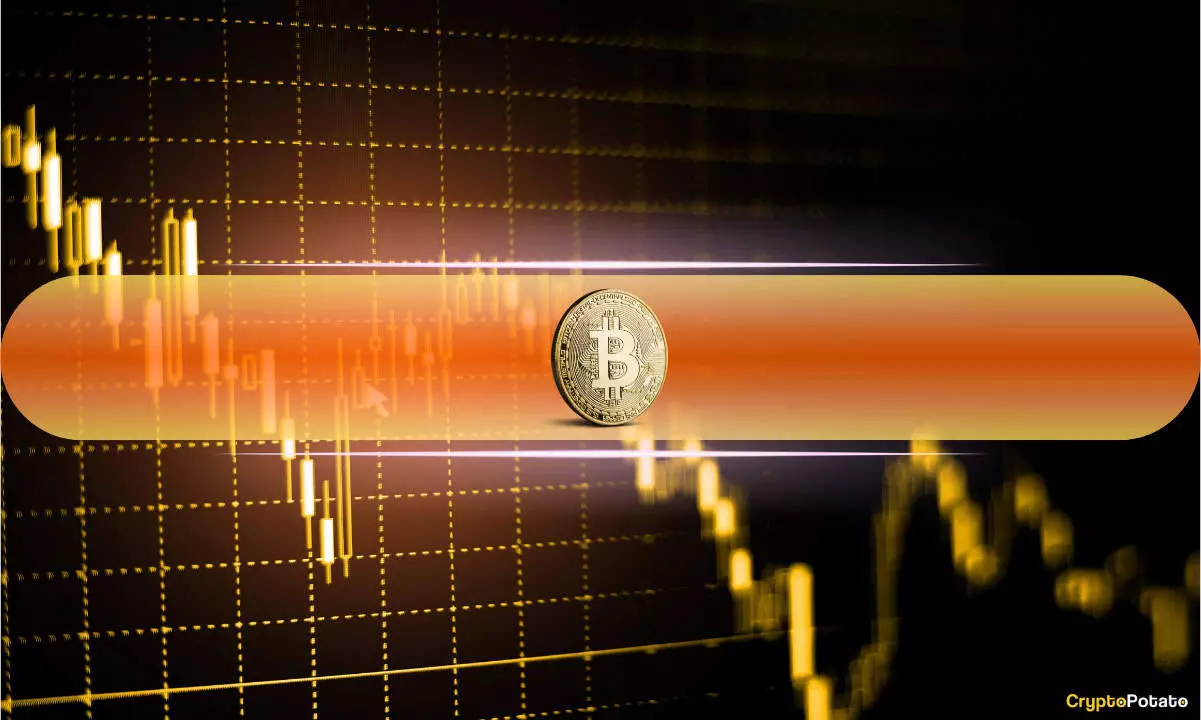The interplay between economic indicators and market reactions has always been a focal point for investors, particularly in the volatile world of cryptocurrency. In light of recent developments in the United States regarding inflation, Bitcoin’s trajectory raises critical questions about the stability and implications for both traditional and digital assets. The recent rise in inflation has not merely sparked panic but has also presented unique opportunities and challenges within the crypto space, prompting deeper analysis.
The US Consumer Price Index (CPI) rose unexpectedly, detailing a monthly increase of 0.5%, accumulating to an annual rate of 3.0%, which surpassed the projections of 2.9%. This announcement led to immediate repercussions in various financial markets, with cryptocurrencies like Bitcoin experiencing notable short-term declines, followed by recoveries. The core CPI, which strips out volatile food and energy prices, also exceeded expectations, rising 0.4% month-over-month and establishing an annual rate of 3.3%. Such data ignited discussions reminiscent of previous inflationary fears, driving traders and investors to reassess their strategies in a sector already marked by uncertainty.
Interestingly, social media platforms have seen a marked increase in conversations surrounding inflation and cryptocurrency. Notably, platforms like Reddit, X, and Telegram have buzzed with sentiment analysis, indicating a growing concern among retail investors regarding the state of the economy and its implications for digital currencies. This rise in discourse could symbolize a collective anxiety within the crypto community, identifying inflation as both a pivotal issue and a potential catalyst for market movements.
Bitcoin’s price initially dipped to approximately $94,000 before displaying considerable resilience by rebounding to around $98,000. This fluctuation exemplifies the classic “sell the rumor, buy the news” market mentality, wherein traders acted on anticipated negative news, only to pivot once the actual information was disclosed. The rapid recovery also implies that seasoned investors might have had access to insider knowledge regarding the inflation figures, which many traders were unaware of until the official release of the CPI report.
As anxiety rippled through retail investors, evidence surfaced that insiders and larger investors, or ‘whales’, are capitalizing on these moments of volatility. Analysts from Santiment have flagged a worrying trend indicating that retail traders may begin to retreat from the crypto market if further disappointing decisions from the Federal Reserve ensue. This would create a favorable environment for larger players looking to accumulate Bitcoin at potentially reduced prices, further intensifying the volatility in the marketplace.
The Federal Reserve’s recent decisions have remarkably influenced market conditions. The FOMC’s choice to halt interest rate cuts, a reversal from prior reductions throughout 2023 and 2024, has left investors wary. With inflation presenting a real threat, the anticipation that the Fed might hold off on rate cuts, crucial for market expansiveness, has become palpable. Histories of sharp rate increases accompanied by significant market corrections weigh heavily on the minds of traders, fostering an environment ripe for fear, uncertainty, and doubt (FUD).
The decline in the number of Bitcoin holders reflects broader market sentiment, as many retail participants weigh their positions in face of inflationary pressures and Fed policy. Those steeped in the crypto market recognize that price volatility is often symptomatic of a broader trend, informed by macroeconomic factors, which suggests a cautious approach moving forward.
Despite the looming challenges presented by inflation, there are potential opportunities on the horizon for the cryptocurrency market. Proposed legislative measures across several US states aimed at increasing Bitcoin reserves could spur significant demand. Analysts estimate that should these bills be enacted, they may lead to a staggering $23 billion influx into Bitcoin beyond the current holdings of the US government. With 19 states considering such measures, the potential for upward pressure on Bitcoin prices is substantial, particularly in regions that are making impressive legislative strides.
Overall, Bitcoin’s recent performance amid inflationary fears highlights the intricate balance between market speculation, retail sentiment, and institutional maneuvers. Although the landscape appears tumultuous, opportunities persist for those astute enough to navigate these complexities, reiterating that within chaos often lies the seed for potential growth.


Leave a Reply